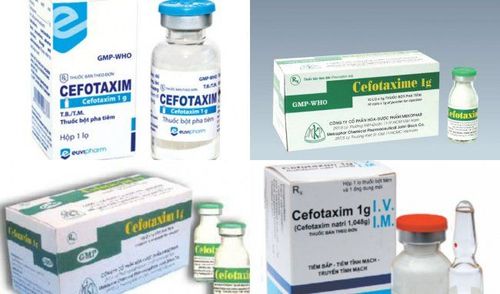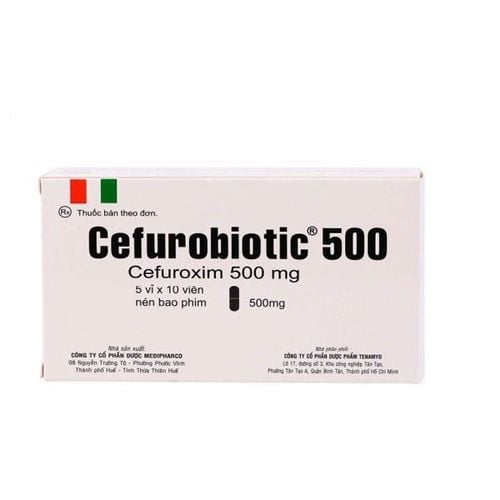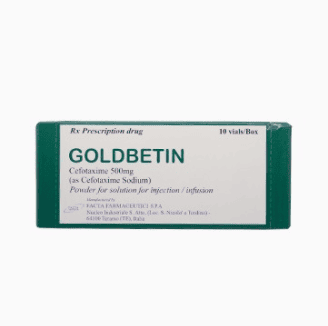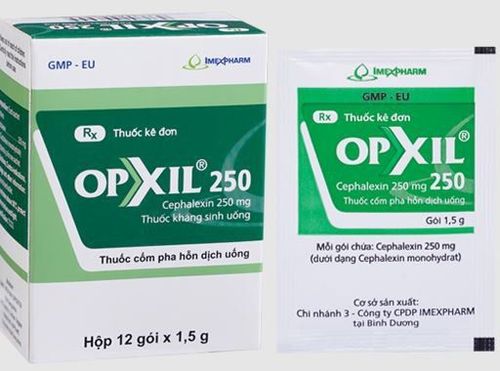This is an automatically translated article.
Cephalosporins are classified by generation based on the characteristics of their antibacterial action. The third generation cephalosporins are less effective against Gram-positive cocci than the first generation, but are much more effective against the Enterobacteriaceae family, including beta-lactamase-producing strains. However, the effect against Pseudomonas aeruginosa must be considered with caution, because of the wide variation in resistance rates and antibiotic use in hospitals, communities and cities.
1. What are 3rd generation cephalosporin antibiotics?
3rd generation cephalosporins include cefotaxime, cefixime, cefoperazone, ceftazidime, ceftizoxime, ceftriaxone... These drugs have good effects on gram-negative bacteria, are stable to beta lactamases and achieve bactericidal concentrations in CSF . However, on gram-positive bacteria, the effect is less than first-generation penicillins and cephalosporins. The drug works both against P.aeruginosa, in which ceftazidim and cefoperazone are the best.
2. 3rd generation Cephalosporin drug form and drug content
Cephalosporin 3rd generation is contained in vials of 0.5 g; 1 g; 2 g as a medicinal powder and with a solvent tube for reconstitution. The drug content in the liquid vial for injection corresponds to 250 mg, 500 mg and 1 g of cefotaxime.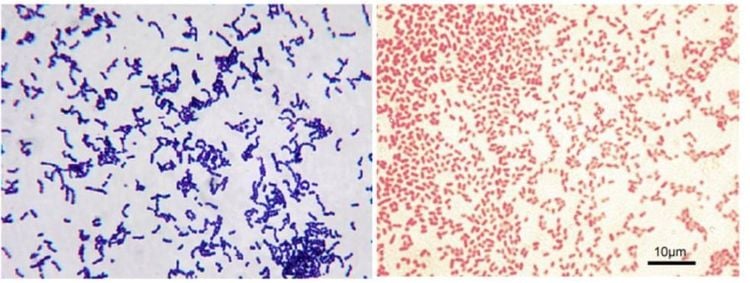
Vi khuẩn gram âm và gram dương
3. In which cases is the third generation Cephalosporin indicated?
As a group of antibiotics, 3rd generation Cephalosporins are often used for serious and critical infections caused by bacteria sensitive to cefotaxime, including:
Brain abscess. Sepsis . Inflammation of the endocardium. Meningitis (except meningitis caused by Listeria monocytogenes). Pneumonia . Gonorrhea . Typhoid disease. Concentrated treatment. Severe intra-abdominal infections (in combination with metronidazole). Prophylaxis of infection after prostatectomy, including laparoscopic surgery, cesarean section.
4. Contraindications for 3rd generation Cephalosporin drugs?
3rd generation Cephalosporin drugs are not used for cases of hypersensitivity to cephalosporins and hypersensitivity to lidocaine (if using lidocaine-containing preparations).

Cephalosporin thế hệ 3 chống chỉ định cho những người bị dị ứng và mẫn cảm với lidocain
5. Notes when using 3rd generation Cephalosporin drugs
Before and during the use of 3rd generation Cephalosporins, the patient should pay attention to the following points:
Before starting treatment with 3rd generation Cephalosporins, the patient must be thoroughly investigated for a history of allergy to cephalosporins. , penicillin, or another drug. Commercial cefotaxime preparations containing lidocaine should be administered intramuscularly only, never intravenously. There are 5 - 10% cases of cross-allergic reactions between penicillins and cephalosporins. Therefore, extreme caution must be exercised when cefotaxime is administered to patients who are allergic to penicillin. If concomitant use of potentially nephrotoxic drugs (eg, aminoglycosides) is observed, renal function should be monitored. 3rd generation cephalosporins can cause false positives with the Coombs test, with tests of the urinary tract, with reducing agents without the use of an enzyme method. The safety of 3rd generation cephalosporins in pregnancy has not been established. The drug crosses the placenta in the second trimester of pregnancy, so it should be used with caution in pregnant women. 3rd generation Cephalosporins can be used in nursing mothers, but care must be taken when seeing children with diarrhea, thrush and rash, if avoided, it is good.
6. Adverse effects (ADRs) of 3rd generation Cephalosporin drugs
The most common side effects of Cefotaxime, ADR > 1/100
Gastrointestinal: Diarrhea Local: Thrombophlebitis at the injection site, pain and inflammatory reaction at the intramuscular injection site. Rarely, 1/100 > ADR > 1/1000
Blood: Eosinophilia or general leukopenia results in a positive Coombs test. Gastrointestinal: Changes in gut bacteria, possible superinfection due to drug-resistant bacteria such as Pseudomonas aeruginosa, Enterobacter spp,.... Rarely, ADR < 1/1000
Systemic: Anaphylaxis , hypersensitivity reactions. Blood: Thrombocytopenia, agranulocytosis, hemolytic anemia. Gastrointestinal: Clostridium difficile pseudomembranous colitis. Liver: Increased plasma bilirubin and liver enzymes.

Tác dụng phụ của Cefotaxim có thể khiến người bệnh bị tiêu chảy
7. How to deal with drug side effects
When there are severe manifestations of undesirable effects such as hypersensitivity response, pseudomembranous colitis, the use of 3rd generation Cephalosporins must be stopped immediately. To prevent injection phlebitis, injection or slow intravenous infusion is required. In order to reduce pain caused by intramuscular injection, it is necessary to mix lidocaine with the drug immediately before injection, or use a drug with lidocaine available.
8. Possible 3rd generation Cephalosporin drug interactions
When using parallel drugs, drug interactions are inevitable and 3rd generation Cephalosporins are no exception. Especially when using Cephalosporins and colistin. The combination of cephalosporin antibiotics with colistin (a polymyxin antibiotic) may increase the risk of kidney damage.9. Overdose of 3rd generation Cephalosporin and how to handle it
In the case of treatment or after treatment with 3rd generation Cephalosporins, if the patient has severe or prolonged diarrhea, it is likely that the patient has pseudomembranous colitis. This was a case of severe gastrointestinal disturbance, requiring discontinuation of the 3rd generation cephalosporin and replacement with a clinically effective antibiotic for C. difficile colitis. In case of symptoms of poisoning, it is necessary to immediately stop the 3rd generation Cephalosporin and take the patient to the hospital for treatment.3rd generation cephalosporin is a drug belonging to the group of antibiotics, so patients need to be careful when using it, especially in the case of long-term use.
Currently, the overuse of antibiotics, the indiscriminate use of antibiotics has increased the risk of side effects and becoming antibiotic resistance. Therefore, patients should choose reputable medical facilities with good expertise to treat and guide the most effective use of antibiotics.
Vinmec International General Hospital is the address for examination, treatment and prevention of diseases. When performing the examination process at Vinmec, customers will be welcomed and used modern facilities and machinery along with perfect medical services under the guidance and advice of doctors. Good doctors, well-trained both at home and abroad. In case it is necessary to use antibiotics to treat diseases, doctors at Vinmec will provide a treatment plan, and advise and guide patients to use drugs effectively, avoiding abuse and misuse. Indiscriminate use of antibiotics causes undesirable side effects such as antibiotic resistance.
Please dial HOTLINE for more information or register for an appointment HERE. Download MyVinmec app to make appointments faster and to manage your bookings easily.




